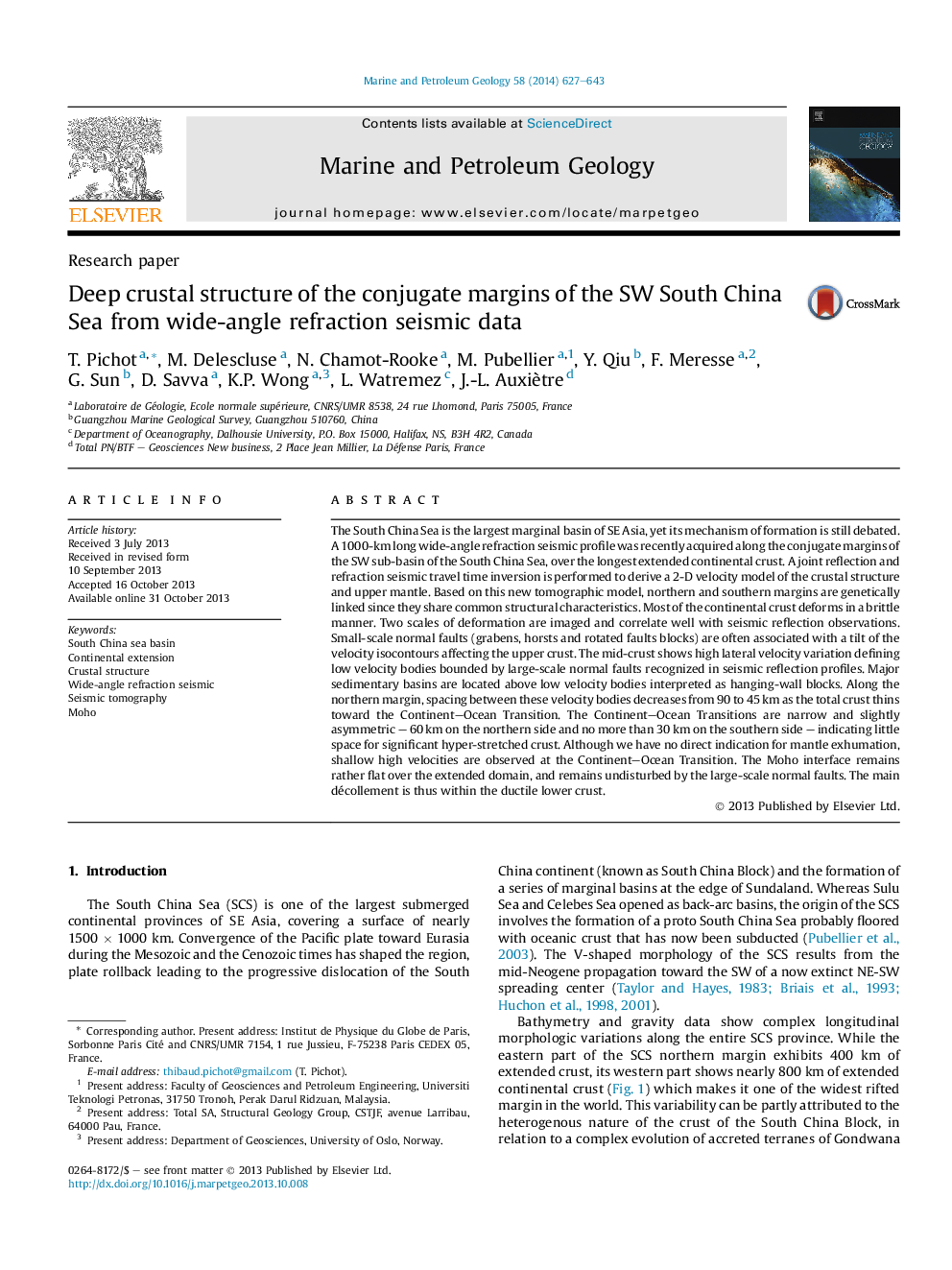| Article ID | Journal | Published Year | Pages | File Type |
|---|---|---|---|---|
| 4695591 | Marine and Petroleum Geology | 2014 | 17 Pages |
•Wide-angle refraction seismic images the conjugate margins of the South China Sea.•Moho interface remains rather smooth over the extended domain.•Crust at mid-depth (10 km bsf) shows fault-related lateral velocity variations.•Large-scale normal faults root in the lower ductile crust.•The crust is partly composed of inherited granitic plutons of Yanshanian origin.
The South China Sea is the largest marginal basin of SE Asia, yet its mechanism of formation is still debated. A 1000-km long wide-angle refraction seismic profile was recently acquired along the conjugate margins of the SW sub-basin of the South China Sea, over the longest extended continental crust. A joint reflection and refraction seismic travel time inversion is performed to derive a 2-D velocity model of the crustal structure and upper mantle. Based on this new tomographic model, northern and southern margins are genetically linked since they share common structural characteristics. Most of the continental crust deforms in a brittle manner. Two scales of deformation are imaged and correlate well with seismic reflection observations. Small-scale normal faults (grabens, horsts and rotated faults blocks) are often associated with a tilt of the velocity isocontours affecting the upper crust. The mid-crust shows high lateral velocity variation defining low velocity bodies bounded by large-scale normal faults recognized in seismic reflection profiles. Major sedimentary basins are located above low velocity bodies interpreted as hanging-wall blocks. Along the northern margin, spacing between these velocity bodies decreases from 90 to 45 km as the total crust thins toward the Continent–Ocean Transition. The Continent–Ocean Transitions are narrow and slightly asymmetric – 60 km on the northern side and no more than 30 km on the southern side – indicating little space for significant hyper-stretched crust. Although we have no direct indication for mantle exhumation, shallow high velocities are observed at the Continent–Ocean Transition. The Moho interface remains rather flat over the extended domain, and remains undisturbed by the large-scale normal faults. The main décollement is thus within the ductile lower crust.
